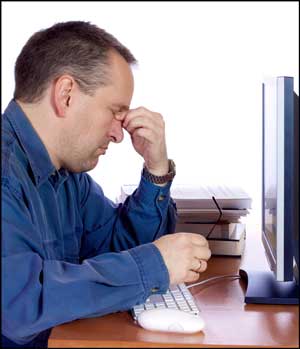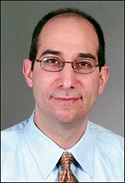Most demanding careers like those in medical disciplines come with stress. But when medical professionals feel completely exhausted, unable to concentrate, or neglect their own well-being, they can potentially harm patients. Consequently, the subject of burnout is getting a lot of attention these days in discussions of patient safety.
Burnout is a syndrome characterized by emotional exhaustion, depersonalization, and feelings of lack of personal accomplishment (1). Medically, however, it is controversial (2). Burnout is not an accepted medical diagnosis, but rather a description of an emotional and behavioral state. There is some evidence that burnout is a risk factor for depression.
While more than 200 published studies describe burnout in medical professionals such as nurses, physicians, and medical students, to my knowledge, there are no peer-reviewed studies of clinical laboratory workers. Only pathologists have been included in studies of physician burnout.

Are patient safety initiatives burning out this lab manager?
How Is Burnout Measured?
There are a number of validated tools for describing burnout, the most common being the Maslach Burnout Inventory (3). A recent study of 7,288 U.S. physicians using this tool asked 22 questions that explored all three domains of burnout: emotional exhaustion, depersonalization, and personal accomplishment (1).
How Burned Out Are Physicians?
The researchers found that 46% of physicians in all major disciplines had at least one symptom of burnout, with the most practicing in emergency medicine, family medicine, and critical care. In contrast, only 32% of pathologists reported experiencing at least one symptom, ranking them in the bottom quartile along with psychiatrists and rheumatologists. The results are significant because overall physicians were more likely to experience burnout than a population of non-physician controls.
Physicians reporting burnout were also graded on the severity of their symptoms using a rating of 1 for "does not interfere with my life" to 7, "thinking about leaving the field." Of interest, burned out pathologists had one of the highest severity scores, with a mean of 4. This means that pathologists are less likely than other physicians to burn out; but when they do, it tends to be more severe.
Five Signs of Burnout
You may be on the road to burnout if:
- Every day is a bad day.
- Caring about your work or home life seems like a total waste of energy.
- You're exhausted all the time.
- The majority of your day is spent on tasks you find either mind-numbingly dull or overwhelming.
- You feel like nothing you do makes a difference or is appreciated.
What's the Impact on Patient Safety?
A number of authors have strongly suggested that physician burnout represents a significant patient safety problem. For example, Shanafelt and colleagues (1) concluded from their own study, as well as similar ones, that physician burnout was "a highly prevalent and systemic problem threatening the foundation of the U.S. medical care system." Robert Wachter, MD, of the University of California, San Francisco, an influential figure in the patient safety movement, recently expressed another point of view. He hypothesized that the many time-consuming patient safety initiatives in hospitals contribute significantly to physician burnout (4).
How to Approach Burnout on Patient Safety?
To date, the impact of burnout on patient safety has not been thoroughly evaluated. One could make a reasonable argument, however, that the hallmarks of burnout—loss of enthusiasm for work, depersonalization in dealing with patients and colleagues, and lack of concentration—impact more than patient safety. Burnout also likely detracts from the health, safety, satisfaction, and retention of healthcare workers.
Nevertheless, any conclusions about the effect of burnout on patient safety (and patient safety on burnout), especially in the laboratory where data is absent, remain speculative. Therefore, prudence, workplace support, and further study, rather than crisis intervention, is the calm and practical approach.
REFERENCES
- Shanafelt TD, Boone S, Tan L, et al. Burnout and satisfaction with work-life balance among U.S. physicians relative to the general U.S. population. Arch Intern Med 2012;172:1377–85.
- Kaschka WP, Korczak D, Broich D. Burnout: A fashionable diagnosis. Dtsch Arztebl Int 2011;108:781–7.
- Maslach C, Jackson SE, Leiter MP. Maslach burnout inventory manual, 3rd Ed. Palo Alto, Calif.: Consulting Psychologists Press 1996.
- Wachter's World. Wachter RM. Is the patient safety movement in danger of flickering out? http://community.the-hospitalist.org/2013/02/18/is-the-patient-safety-movement-in-danger-of-flickering-out/ (Accessed February 2013).

Michael Astion, MD, PhD, is medical director of Department of Laboratories, Seattle Children's Hospital, Seattle, and chair of the Patient Safety Focus Editorial Advisory Board.
Email: [email protected]